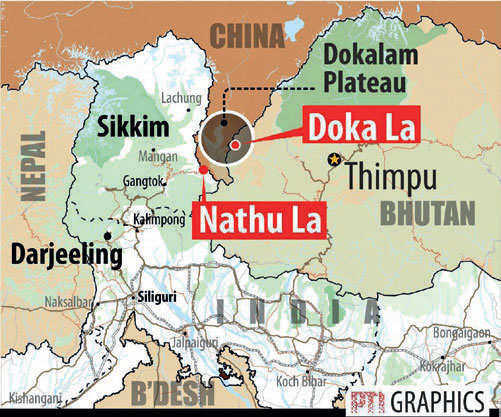
Ajay Banerjee
Tribune News Service
New Delhi, June 20
Almost a year after Delhi and Beijing were locked in 73-day intense military stand-off at Doklam, the People’s Liberation Army troops conducted a three-day tactical exercise close to last year’s confrontation point at the tri-junction of India, China and Bhutan. The only difference this time was India was informed in advance about the drill.The exercise was conducted from June 6-8 in the southern-most edge of Chumbi valley, which is a Chinese territory located between Sikkim and Bhutan. The last year’s stand-off had started on June 16 and ended on August 28.India closely watched the exercise and an assessment had been made, said sources. Some 500 Chinese troops are now permanently based in the area close to Doklam, “which is the new normal”, said a senior functionary. India has much superior defence with more than 30,000 troops and even a regiment of tanks lined up along eastern Sikkim, which literally overlooks the Chumbi valley — 25 km at its widest and 2 km at its narrowest.In the past decade or so, India has “militarily tailored” its defence set-up along the Himalayas. In early-2004, Delhi stepped up efforts to secure areas along the 3,488-km Line of Actual Control—the de facto boundary. Every possible route of ingress is now continuously “war gamed” — it’s the art of predicting future outcomes of military postures of rivals — fine-tuned by regular military exercises, study of satellite imagery and available inputs.In March, Prime Minister Narendra Modi and Chinese President Xi Jinping had, at an informal summit in Wuhan, issued “strategic guidance” to their respective militaries. “Build trust and have a mechanism to prevent incidents in the border regions,” said a statement issued from Wuhan. The local commanders of both sides have been meeting at Nathu La in Sikkim and China had informed in advance about the exercise.China’s control over Chumbi valley has an interesting anecdote. Patrick French, author of ‘Younghusband: The last of the great imperial adventurer’, writes: “The article which allowed British access to Lhasa (after the 1904 annexation) was torn up and Younghusband’s hard-earned indemnity reduced to two-thirds of a more manageable Rs 2.5 million (Rs 25 lakh). The Chumbi valley was to be vacated by 1908.”
Wuhan effect
- After the Wuhan summit in March, Army representatives from both sides have been meeting at Nathu La in Sikkim or China.
